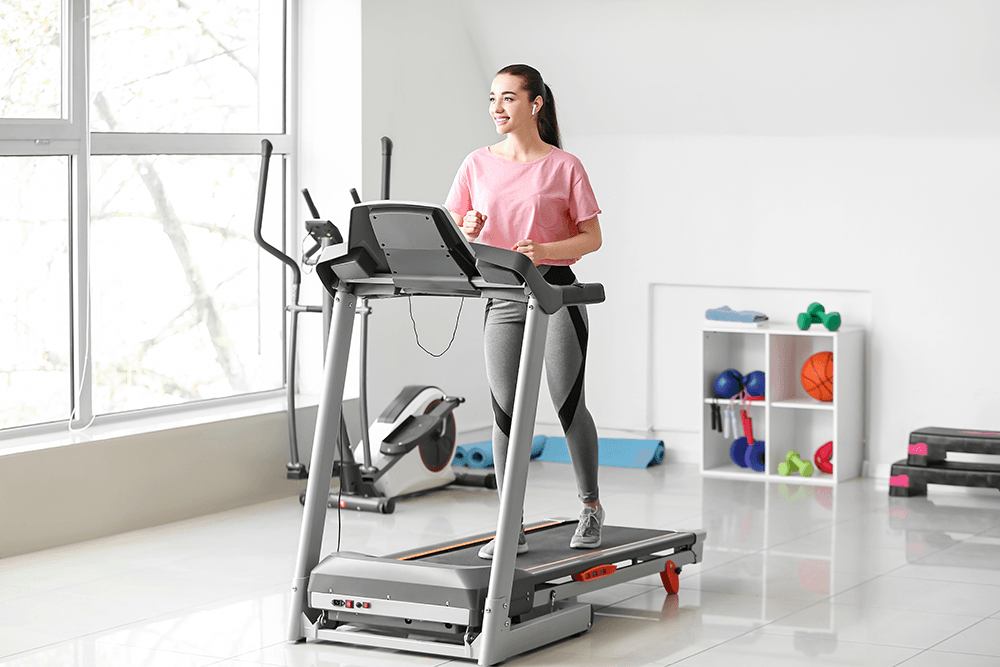
 Moving Tips
Moving TipsHow To Move Exercise Equipment Safely
How to Safely Move Your Home Gym Equipment (2025 Guide)
Moving day is here, and your eyes are locked on the heaviest items in your home—your gym equipment. Whether it’s a treadmill, squat rack, or a collection of weights, relocating this gear can feel overwhelming.
But don’t worry—you’re not alone, and this process is entirely doable. With the right strategy and a little elbow grease (or professional help), you can get your equipment to your new space safely, securely, and stress-free.
🏋️♂️ Step 1: Categorize Your Gym Equipment
Start by dividing your home gym into two categories:
- Light/portable items: Yoga mats, resistance bands, gym towels, jump ropes, and small dumbbells.
- Heavy/bulky items: Treadmills, stationary bikes, ellipticals, power racks, benches, and large weight sets.
Portable items are typically easy to pack in boxes. Larger equipment often requires disassembly, special tools, and a team effort to move.
🚚 Step 2: Decide — DIY or Professional Movers?
✅ DIY Move
If you’re handy, have a dolly or sliders, and can recruit help, you might be able to move most of your gear yourself. Here’s what’s involved:
- Disassemble machines (if possible)
- Label each part and store bolts in zip-top bags
- Use a dolly or furniture sliders for easier movement
- Load everything securely in your vehicle or rental truck
Pros: Lower cost, full control
Cons: Physically demanding, risk of injury or damage
Hire Professional Movers
For those who want to avoid the heavy lifting, professional movers are a great option. Specialized gym equipment movers can:
- Disassemble and reassemble your machines
- Safely pad and wrap items
- Use appropriate tools to move large gear
- Provide insurance for peace of mind
Pros: Safe, efficient, stress-free
Cons: Costs more (see pricing below)
🧽 Step 3: Prep Equipment Before the Move
Taking time to prep your gym equipment makes the move smoother and protects your investment.
🧼 Clean and Sanitize
Before packing, wipe down all machines and weights with disinfectant. Not only does this help prevent bacteria spread, but it also protects finishes and coatings from moisture and grime buildup.
🛠 Lubricate Moving Parts
Check your owner’s manuals and lubricate any moving components—like chains, pulleys, or pivot points. This helps prevent rust or friction issues after the move.
📦 Pack Weights and Accessories
- Wrap dumbbells and weight plates in towels or bubble wrap
- Use sturdy, small boxes for weights (no more than 50 lbs per box)
- Pack accessories (e.g., jump ropes, yoga mats) in duffel bags or bins
- Label each box clearly
🔧 Disassemble Large Equipment
Disassembling reduces size and weight. Keep these tips in mind:
- Take photos of every step for reassembly
- Label cables and wires
- Place screws and bolts in labeled bags
- Use zip ties to bundle cords or disassembled pieces
🛡️ Step 4: Move It Safely
Even if you’ve got the muscle, technique is everything when lifting heavy gym gear.
🪜 Use Moving Equipment
- Furniture sliders: Great for moving heavy machines over carpet or hardwood
- Dollies and hand trucks: Essential for treadmills, bikes, and elliptical bases
- Lifting straps: Help distribute weight and reduce back strain
🧱 Protect Your Home
- Cover walls and door frames with foam or cardboard
- Lay down rugs or blankets to protect flooring
- Pad sharp corners and heavy metal edges
🛻 Secure in the Truck
- Load heaviest items first
- Strap down equipment using ratchet straps
- Fill gaps with blankets or boxes to prevent shifting
🔁 Step 5: Reassemble and Test
Once you arrive at your new home:
- Reassemble equipment using your photos and labeled parts
- Double-check bolts and screws for tightness
- Plug in powered machines and test safety features
- Clean surfaces again for a fresh start
💲 Cost to Move Gym Equipment
The cost depends on how much gear you have and whether you’re doing it yourself or hiring movers.
🔒 Tips for Moving Specific Equipment
🏃 Treadmills
- Fold and lock into upright position if foldable
- Remove safety key and pack separately
- Use a dolly to move
🚴 Stationary Bikes
- Remove pedals and handlebars (if needed)
- Cover digital displays with padding
- Use sliders or team lift to avoid tipping
🏋️ Power Racks
- Disassemble if possible
- Remove j-hooks, safety arms, and pull-up bars
- Keep bolts and washers together in labeled bags
⚖️ Dumbbells & Plates
- Use multiple boxes to distribute weight
- Avoid placing them all in one large container
- Wrap each to prevent scuffing or cracking
⚠️ Common Mistakes to Avoid
- Overloading boxes with weights – keep them manageable
- Skipping labels or instructions – makes reassembly harder
- Not protecting flooring – can result in scratches or cracks
- Forgetting to secure items in the truck – causes shifting and damage
- Rushing reassembly – always double-check each part for safety
🧠 Final Thoughts
Moving your home gym may seem intimidating, but with planning and the right tools, it can be a seamless process. Whether you're going DIY or hiring pros, make sure your priority is safety—both for yourself and your equipment.
A little extra care today will ensure you’re back to your regular training routine tomorrow, without missing a beat (or a rep).
We're Your Storage Solution!
Storage Rentals of America is your convenient self-storage solution. So come into our office or give our storage experts a call at 1-800-457-5678. Our call center is available 7 days a week and can help determine which storage unit size best fits your storage needs.



